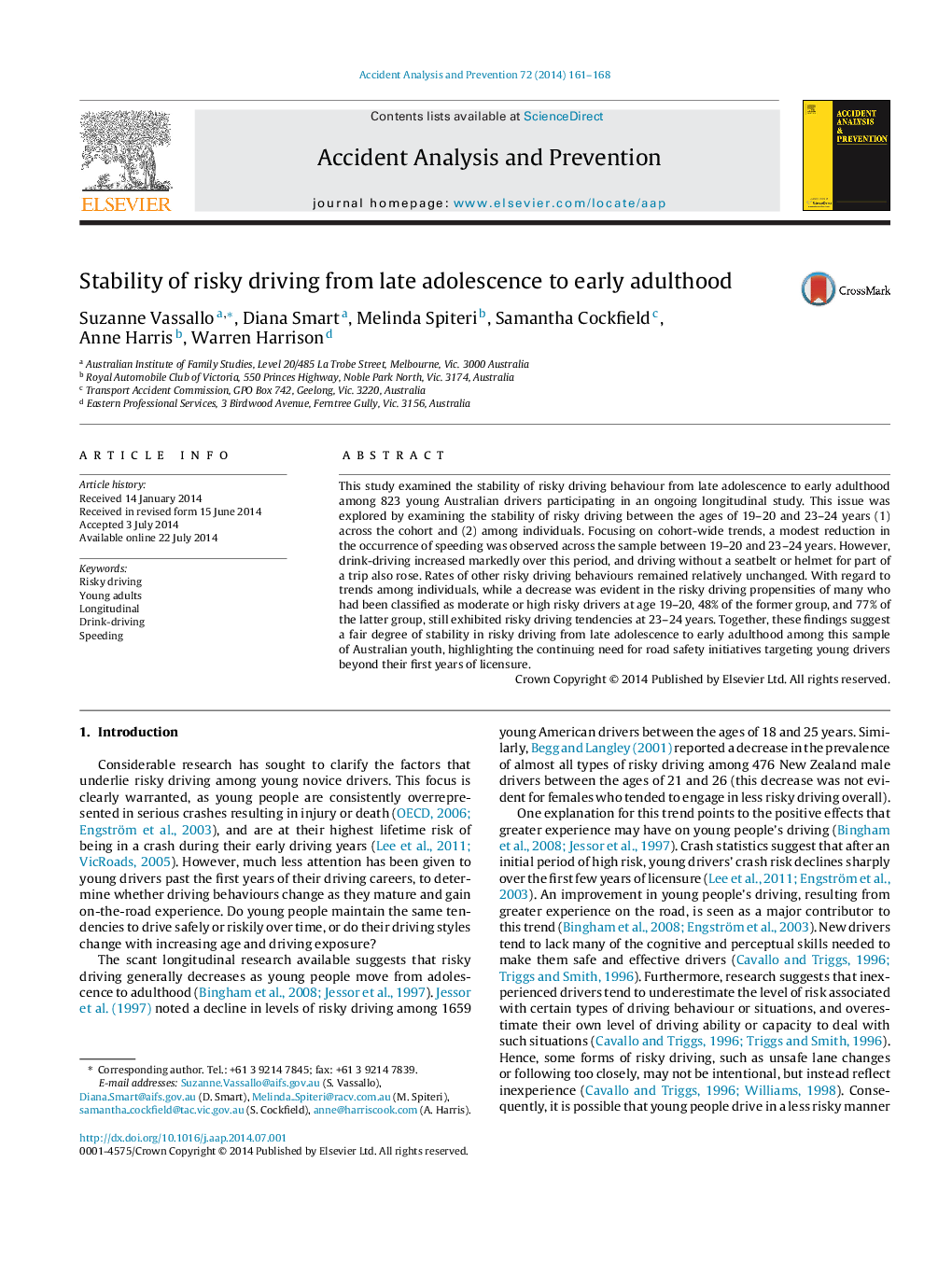| Article ID | Journal | Published Year | Pages | File Type |
|---|---|---|---|---|
| 572261 | Accident Analysis & Prevention | 2014 | 8 Pages |
•We examined the stability of risky driving between the ages 19–20 and 23–24.•Cohort-wide and individual-level changes were examined.•A small decline in speeding was observed, but drink-driving markedly increased.•Many risky drivers showed improvement, but still exhibited risky driving tendencies.•Continuing need for interventions targeting drivers past their early driving years.
This study examined the stability of risky driving behaviour from late adolescence to early adulthood among 823 young Australian drivers participating in an ongoing longitudinal study. This issue was explored by examining the stability of risky driving between the ages of 19–20 and 23–24 years (1) across the cohort and (2) among individuals. Focusing on cohort-wide trends, a modest reduction in the occurrence of speeding was observed across the sample between 19–20 and 23–24 years. However, drink-driving increased markedly over this period, and driving without a seatbelt or helmet for part of a trip also rose. Rates of other risky driving behaviours remained relatively unchanged. With regard to trends among individuals, while a decrease was evident in the risky driving propensities of many who had been classified as moderate or high risky drivers at age 19–20, 48% of the former group, and 77% of the latter group, still exhibited risky driving tendencies at 23–24 years. Together, these findings suggest a fair degree of stability in risky driving from late adolescence to early adulthood among this sample of Australian youth, highlighting the continuing need for road safety initiatives targeting young drivers beyond their first years of licensure.
